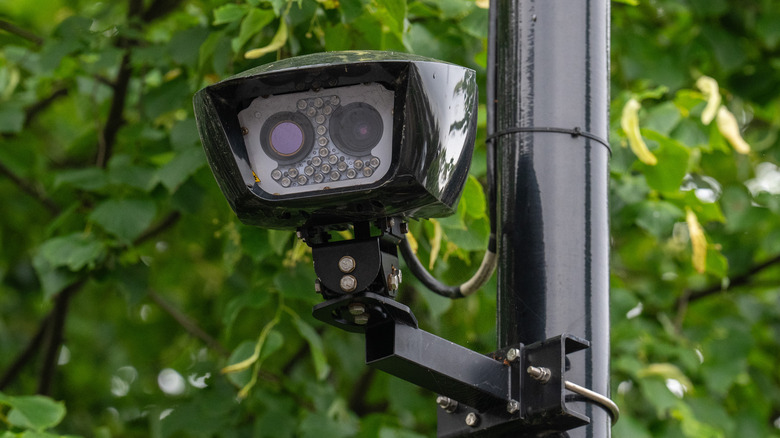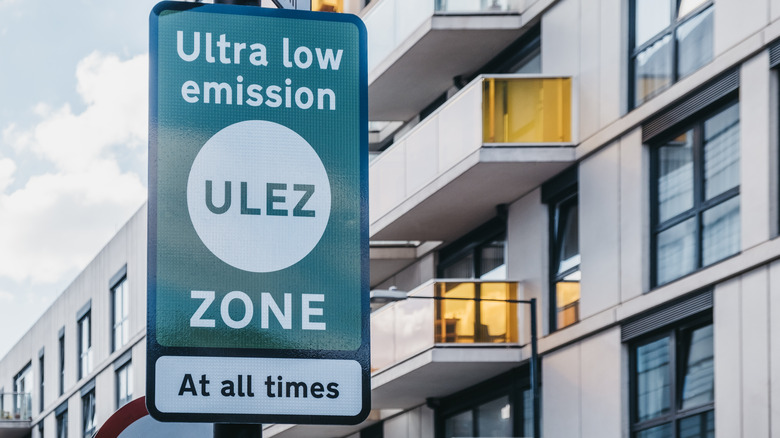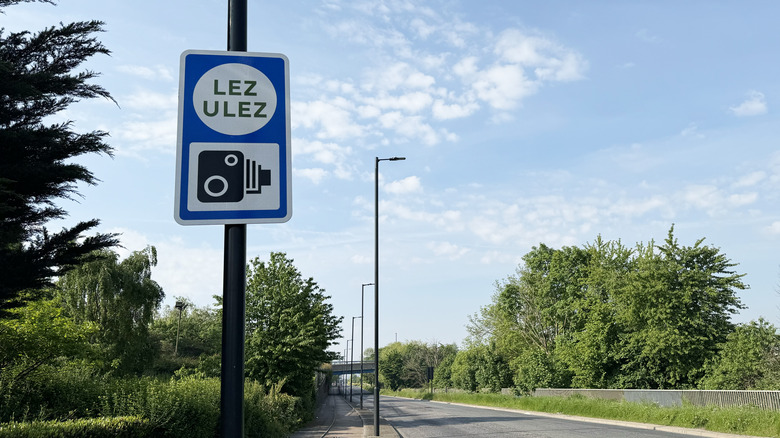What Are ULEZ Cameras & What Are They Used For?
London is on a mission to cut carbon emissions, recognizing that these harmful gases contribute to air pollution and a myriad of health problems, including illnesses like dementia, asthma, cancer, and lung disease. As part of its efforts, the city has created Ultra Low Emission Zones (ULEZ) that are in effect 24 hours a day, seven days a week. Christmas is the only day of the year when the city takes a day off from enforcing ULEZ, which spans all of London's boroughs within the M25.
If you want to drive in this restricted zone, you'll need an exempt or ULEZ-compliant car. For owners of gasoline-powered vehicles, that means meeting at least Euro 4 emissions standards, while diesel-powered vehicles must be Euro 6 compliant. If your car doesn't meet these standards and you drive into London's ULEZ, the city will charge you £12.50 per day. Fail to pay the daily charge, and the city could fine you as much as £180. If you drive a vehicle with an eco-friendly engine, like an electric or hybrid car, you can also drive in London without paying the daily ULEZ fee.
The city uses an extensive network of cameras, known as ULEZ cameras, to enforce these rules. These enforcement cameras have been placed in strategic locations throughout the city to monitor cars circulating in the ULEZ to ensure they comply with emission standards or have paid the daily charge if they do not.
What Are ULEZ Cameras?
Transport for London (TFL) oversees the operation of more than 3400 ULEZ cameras across the city. These cameras use automatic number plate recognition (ANPR) to capture and read a car's license plate as it enters and exits the ULEZ. After the ANPR has scanned the vehicle's license plate, it's converted into image data and sent to a central database managed by the TFL. There, it's cross-referenced with Driver and Vehicle Licensing Agency records, which contain information about the vehicle's emissions standards, age, and type.
If the car isn't up to standards, the daily charge of £12.50 is assessed. Drivers must pay this fee within 21 days to avoid a £180 penalty. Before assessing the £180 penalty, TFL sends drivers a penalty charge notice (PCN) outlining the violation and the fine amount, along with instructions on how to pay the fine or appeal the PCN. While the City of London claims the ULEZ has been a success, with 95% of vehicles complying with the ULEZ standards, this program hasn't been without controversy. Just like people use apps to avoid speed traps, some have turned to anti-ULEZ websites with interactive maps that track locations to avoid ULEZ cameras.
Impact of ULEZ cameras on air quality and public health
The City of London has cited improving public health and air quality through reducing the number of polluting vehicles on the road as two of the main reasons behind the ULEZ initiative, and if we look at the numbers, it seems to be working. Since ULEZ began, the city has become the world's largest clean-air zone. The city says nine million residents have benefited from the ULEZ and now breathe cleaner air. If a resident wants to check on the government's claims, they can download an air quality app for Android to keep tabs on the numbers.
In 2017, only 39% of vehicles driving in London met ULEZ standards; today, that number stands at 95%, a significant increase. According to statistics compiled by the City of London, central and inner London ULEZ have helped reduce toxic nitrogen dioxide pollution in central London by almost 50%, carbon dioxide emissions by 800,000 tons between 2019 and 2022, and cut down on pollution five faster than the rest of the UK between 2016 and 2020.
While most vehicles seen on London streets now comply with ULEZ standards, the city's government is trying to ensure nobody is left behind. To make this happen, the mayor of London has made £160 million available to fund various incentives to help Londoners, small businesses, sole traders, and charities transition to compliant vehicles. If you're a resident of London with an eligible car or motorcycle that isn't compliant, you can ask the city for funding.


